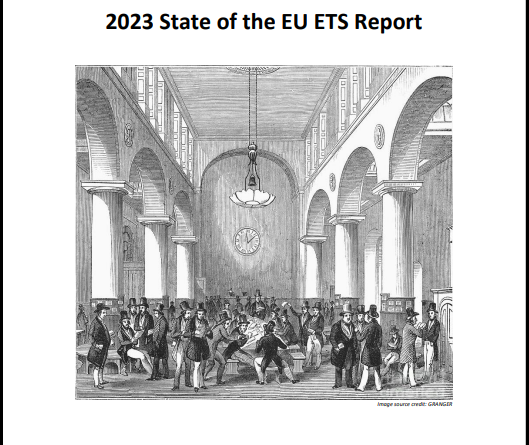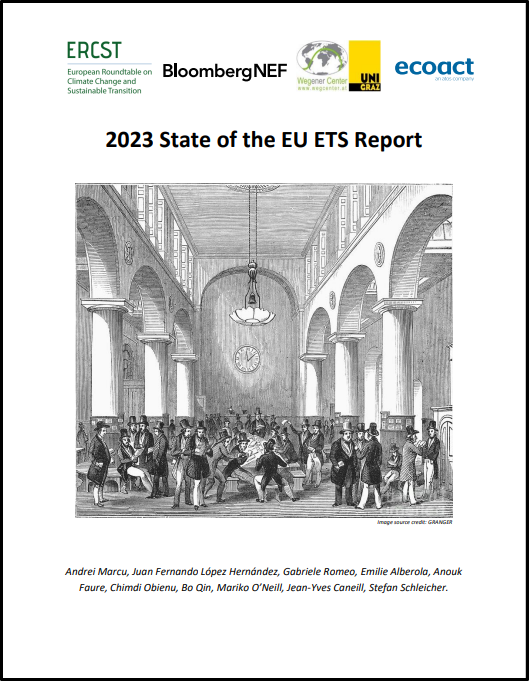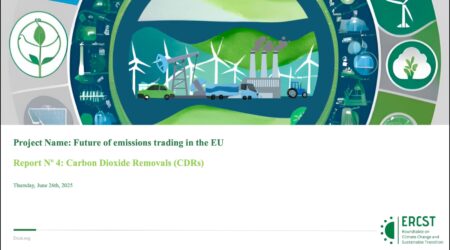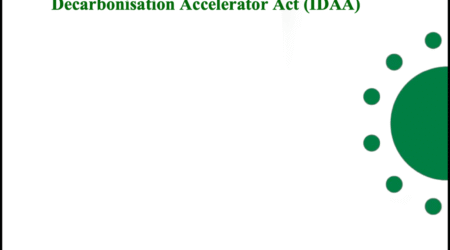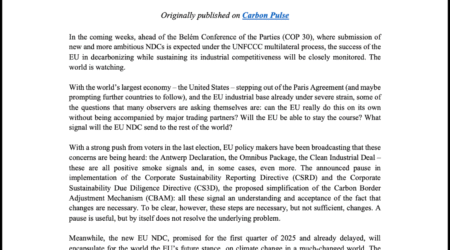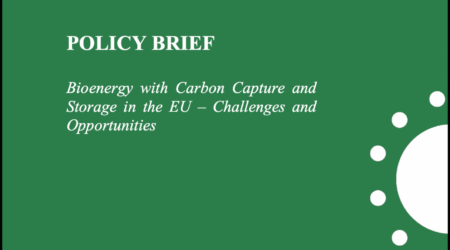2023 State of the EU ETS Report
Author(s): Andrei Marcu, Juan Fernando López Hernández, Gabriele Romeo, Emilie Alberola, Anouk Faure, Chimdi Obienu, Bo Qin, Mariko O’Neill, Jean-Yves Caneill, Stefan Schleicher.
April 26, 2023
The annual “State of the EU ETS” Report aims to provide an independent contribution to the policy debate, which is needed to ensure that the EU ETS is “fit for purpose”. The Report is intended as a “snapshot”, providing policymakers and stakeholders with an overview of how the EU ETS is doing by April of each year, based on previous year data.
The 2023 State of the EU ETS Report is a joint effort between ERCST, BloombergNEF, the Wegener Centre for climate and global change at the University of Graz and EcoAct.
Takeaways:
- The release of this Report takes place at a time when the EU ETS Directive has been adopted by the European Parliament and Council in April. It contains significant changes that can be considered “revolutionary”. The revised EU ETS will become law and will take effect starting in 2024.
- The outcome of the legislative process reflects various hotly debated issues. It also reflects the new realities of the EU ETS in the Fit for 55 package, as well as the stage of the decarbonization of the EU and the role of the EU ETS.
- One important orientation that has become increasingly clear is the switch of the focus from power to industrial decarbonisation, with the increased risk of carbon leakage to energy intensive trade exposed sectors. The phasing out of free allocation is a departure from one of the main provisions put in place to address the risk of carbon leakage. This change also makes the EU ETS delivery function of the performance of another piece of legislation, the newly introduced CBAM.
- The introduction of the CBAM was made possible by the convergence of different constituencies with different objectives which coalesced, such as the elimination of free allocation, and urging EU trading partners to adopt carbon pricing. Currently, one key feature in the CBAM which makes it work-in-progress, and which was punted to the 2026 review, is the treatment of exports, which is key for some sectors and installations.
- One other noteworthy outcome of the phasing out of free allocation will be the increase in revenue from the EU ETS which will be generated through increased auction of EUAs (coupled with increase in EUA prices). The EU ETS is now an important source of funding for the green transition. The Innovation Fund has increased in importance and funds available with, so far, CCS-CCU and electrolysis as the instruments most successful of applying for funds.
- The EU ETS has now reached a stage where, as illustrated by the Market Sentiment Survey, it is seen by stakeholders as providing signals for decarbonisation. This needs to be seen as a significant success. The CBAM is also seen as addressing competitiveness and carbon leakage concerns, with the significant caveat of exports.
- While the CBAM (and funding mechanisms in the Fit for 55 package) may have been seen as sufficient to spur industrial decarbonization and protect against carbon leakage, new international initiatives, such as the United States’ Inflation Reduction Act (IRA), have raised the need for new instruments to support EU industry, aiming to avoid its dislocation to other jurisdictions. This is also related to the EU ETS and needs to be seen as work-in-progress.
- More than half of the respondents to the survey in this report do not show sympathy for the emergency measures adopted to address the energy market crisis, which are not, they believe, in synergy with the EU ETS. This also reflects the realization, which this report emphasizes, of the close interaction between the carbon and electricity markets.
- While the EU ETS was clearly not the main driver in the dramatic increase in electricity prices, this nevertheless has resulted in some production decreases and investment decisions not favourable to the EU. As every bit counts, these outcomes ought to be taken very seriously by EU institutions and in EU capitals.
- As in the previous years’ Reports, this 2023 Report shows the dynamics of emissions in different sectors. Estimates based on preliminary data indicate a 1.3% decrease of total emissions from stationary installations in 2022 compared to 2021, resulting from a 1.3% emissions growth from combustion and a 5.6% decrease from industry.

